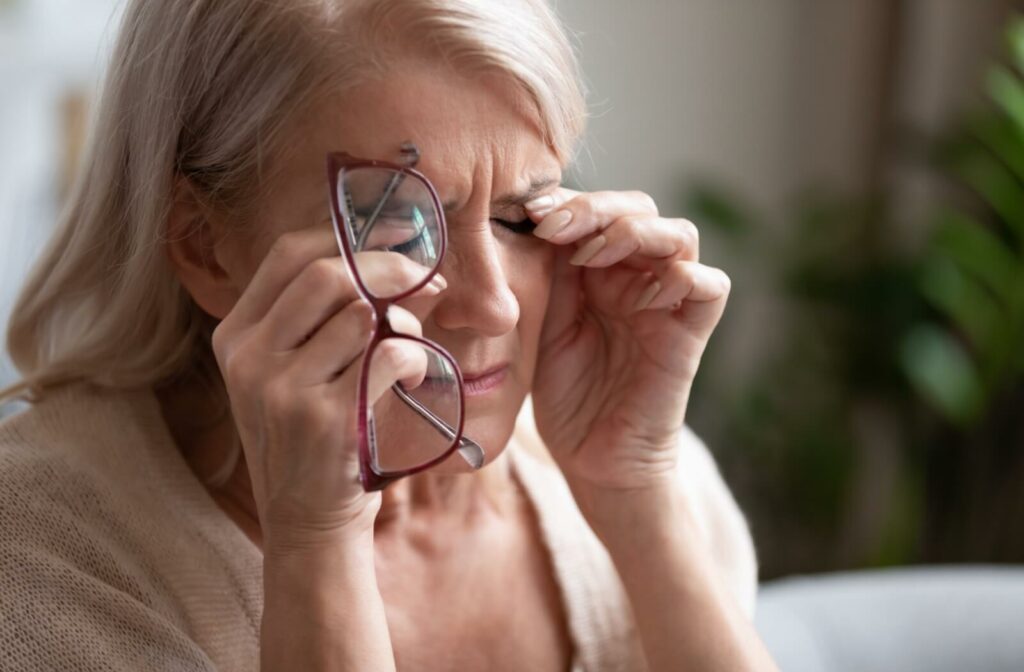At Dr. Bittel Optometry, we understand that dry eyes are more than just a minor inconvenience. Dry eye can significantly impact the quality of your vision as well as your ability to enjoy daily activities. Whether it’s the irritation of dryness or the frustration of blurry vision, these symptoms can interfere with tasks as simple as reading, working on your computer, or driving.
What Are Dry Eyes & How Do They Affect Vision?
Dry eyes occur when your eyes don’t produce enough tears or when your tears evaporate too quickly. Tears are essential for maintaining a stable tear film, which plays a critical role in ensuring crystal-clear vision. When that tear film is disrupted, light can no longer focus properly on the eye’s surface. The result? You may experience blurred vision or constantly fluctuating clarity.
Tasks like working on a screen, reading for extended periods, or even exposure to dry air can exacerbate these issues, turning a small inconvenience into a daily struggle.
The Impact of Dry Eyes on Vision
To better understand how dry eyes affect vision, it’s essential to look at how your tear film works. It has three layers, each essential for protecting and hydrating your eyes.
- The oily outer layer reduces evaporation and keeps your eyes moist longer.
- The watery middle layer hydrates your eye and flushes out any debris.
- The mucous inner layer evenly spreads tears across the surface of the eye.
When just one of these layers isn’t functioning properly, you might notice blurred or fluctuating vision. Certain factors, like spending hours in front of a screen, wearing contact lenses, or being in low-humidity environments, can make these symptoms even worse.
Common Causes of Dry Eyes
Dry eye symptoms don’t just show up out of nowhere. They often have specific triggers or underlying causes. Understanding and identifying these factors is the first step toward effective treatment.
1. Aging
Dry eye becomes increasingly common as we grow older. Tear production naturally decreases with age, leaving older adults more susceptible. Hormonal changes, particularly during menopause, can further contribute to reduced tear production in women.
2. Environmental Factors
Living or working in dry environments or areas with low humidity can cause tears to evaporate faster. Air conditioning, heated rooms, and windy outdoor conditions can also be contributors.
3. Lifestyle Habits
Modern lifestyles can be tough on our eyes. Spending long hours in front of screens lowers your blink rate, which speeds up tear evaporation. Dehydration and overuse of contact lenses can also lead to worsened symptoms.
4. Medical Conditions & Medications
Underneath the surface, medical conditions like Sjögren’s syndrome, diabetes, and autoimmune disorders are frequent culprits of chronic dry eyes. Additionally, medications like antihistamines, antidepressants, or blood pressure treatments can reduce tear production.
Effective Solutions for Dry Eyes
At Dr. Bittel Optometry, we pride ourselves on offering a variety of treatment options tailored exactly to your individual needs. We’re here to not only reduce your discomfort but to help restore clarity to your vision with effective, holistic solutions.
Artificial Tears & Prescription Drops
For mild dry eye cases, artificial tears are often enough to provide relief. These lubricating drops work by supplementing the natural tear film, giving your eyes the moisture they lack. For more moderate or severe cases, we can prescribe medications designed to improve tear production or reduce inflammation, helping you achieve lasting relief.
Nutrition & Omega-3s
Your diet can heavily influence the health of your eyes. Incorporating omega-3 fatty acids into your diet can improve your tear quality. Omega-3s can be found in foods like salmon, flaxseeds, and walnuts can improve your tear quality naturally. We may also recommend specific nutritional supplements to promote optimum eye health and support tear production.
Lifestyle Adjustments
Sometimes, small daily changes can make a huge difference.
- Take breaks from screens. Follow the 20-20-20 rule by looking at something 20 feet away for 20 seconds every 20 minutes.
- Use a humidifier to maintain adequate moisture in the air, especially during colder, drier months.
- Adjust your contact lens use. Consider reducing wear time or switching to lenses specially designed for dry eyes.
Personalized Treatment Plans
Because everyone’s eyes are different, cookie-cutter solutions often don’t address the core problem. That’s why at Dr. Bittel Optometry, we create customized treatment plans to address both the symptoms and root causes of your dry eyes. This ensures not only immediate relief but also long-term improvements.
When to See an Optometrist

Experiencing some occasional eye dryness is normal, especially after tasks like working long hours or spending time in arid conditions. But persistent or worsening symptoms may signal it’s time to consult a professional.
Watch for these signs that it’s time to schedule an appointment:
- Consistently blurry or fluctuating vision
- A gritty, burning, or stinging feeling in your eyes
- Excessive redness or irritation that you can’t resolve
- Difficulty with contact lens use
Dry eye can progress without proper treatment, potentially leading to more serious issues with your eye health. Getting an early diagnosis is key to preserving both your comfort and your vision.
Find Relief for Dry Eyes
Life is too short to live with the constant discomfort, blurred vision, and irritation of dry eyes. At Dr. Bittel Optometry, we’re dedicated to providing personalized care that brings you the relief you deserve. If you’re ready to restore comfort and clarity to your daily life, schedule an appointment with us today. Together, we’ll create a treatment plan that works for you.


